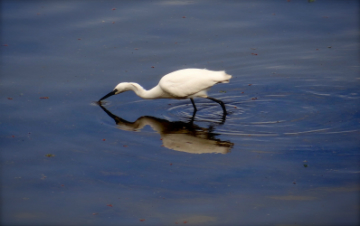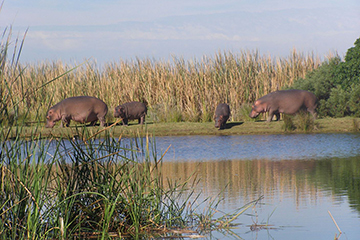Investing in our Natural Heritage with the False Bay upgrade
The False Bay Nature Reserve (FBNR) was officially declared a Ramsar site in 2015. This makes it the 23rd Ramsar site in South Africa. 
Ramsar site
The Ramsar Convention is an international treaty for the conservation and sustainable utilisation of wetlands, recognising the fundamental ecological functions of wetlands and their economic, cultural, scientific, and recreational value. It’s named after the city of Ramsar in Iran, where the Convention was signed in 1971.
False Bay Nature Reserve location
The FNBR is 290 hectares in size and is situated in the metro-south region, east of the City of Cape Town. It’s owned by the City of Cape Town and is managed by the City’s Environmental Resource Management Department.
The False Bay Nature Reserve is a protected area and consists of 6 parts, namely: Rondevlei, Zeekoevlei, Strandfontein Birding Section, Pelican Park Section, Slangetjiebos Section and Zandwolf Coastal Section. The reserve forms part of a bigger network of protected international wetlands that conserves global biological biodiversity, and the maintenance of diverse eco-systems.
Vision
The False Bay nature reserve aims to become one of the leading conservation, environmental education, recreation and ecotourism centres in the country. The reserve aims to provide environmental, tourism, social and economic opportunities, and benefits for all Capetonians, particularly those in the disadvantaged areas.
Fauna and flora
The FBNR Ramsar site is home to more than 300 plant species, some of which are endangered. The reserve is also home to at least 21 mammal species, including the only population of hippopotamus (Hippopotamus amphibious) in Cape Town.
 |
| A family of hippos in the park |
The endangered western leopard toad (Amietophrynus pantherinus) can be found here as well as other reptiles and amphibians. The reserve is also home to 2 highly threatened butterfly species: the Barbers Cape Flats ranger (Kedestes barbarae bunta) and the unique ranger (Kedestes lenis lenis).
The reserve is a birdwatchers’ paradise with more than 240 bird species occurring in the reserve with at least 84 breeding there.
The FNBR is popular for recreational and tourism activities such as fishing, water sports, picnics and braais, and is also used for educational purposes.
False Bay Ecology Park
The False Bay Ecology Park (FBEP) is located within the False Bay Nature Reserve and forms part of a bigger network of protected international wetlands that conserves global biological biodiversity, and the maintenance of diverse eco-systems.
The park includes the Rondevlei and Zeekoevlei nature reserves, a coastal strip, the Cape Flats Waste Water Treatment Works (CFWWTW) and the Coastal Park landfill site.
Reasons to visit the park
- Bird watching. There are more than 240 bird species in the area that can be observed from viewing platforms.
- Water sports. Including fishing, sailing, kayaking, swimming and canoeing at Zeekoevlei.
- Hiking/walking. There are several short hiking trails.
- Picnicking. There are ample facilities for picnicking and braaiing on the eastern shore of Zeekoevlei.
- Educational. Visit the museum.
- Biodiversity. Experience the diverse fauna of the reason including hippo, grysbok, otters, reptiles and frogs. The the Cape Flats cone bush (Leucadendron levisanus), the Rondevlei spiderhead (Serruria aemula foeniculaceae) and the Cape Flats erica (Erica verticillata) are just some of the over 256 species of indigenous plants that grow here.


